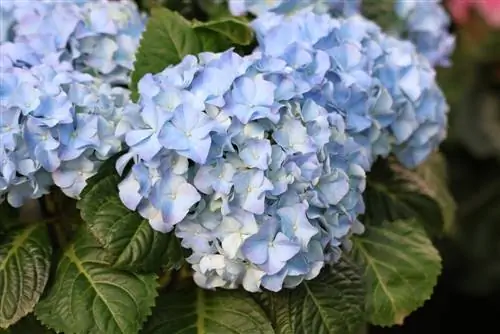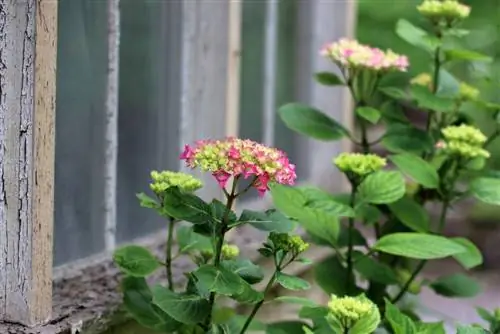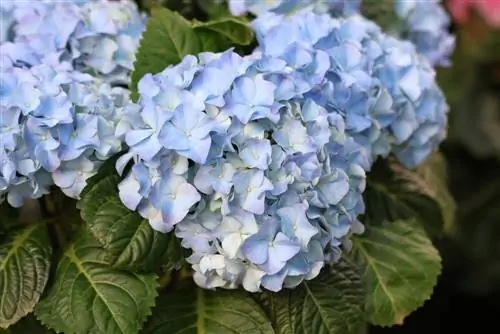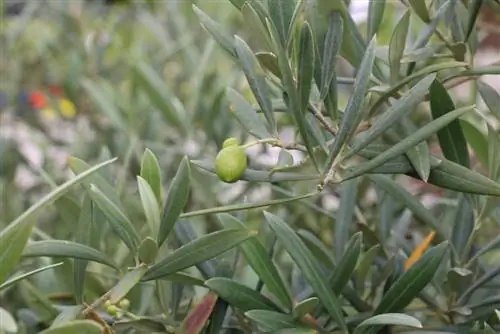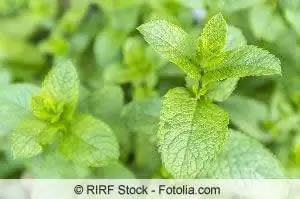- Author admin [email protected].
- Public 2023-12-17 03:39.
- Last modified 2025-01-24 12:45.
Everyone wants a decorative hydrangea bush. But there is not always enough space for the bushes, and there is often even no garden. But hydrangeas can be cultivated well in a pot, which then finds its place on a balcony or terrace depending on its size and availability. What proper care looks like is described in the following article.
Location
The hydrangea needs a lot of moisture and dries out quickly. Potted plants in particular are even more severely affected by this because the soil in the pot can be exposed to more sunlight and is only available to a limited extent. The chosen location is therefore important for the plant so that it does not dry out quickly. The ideal location for the plant cultivated in a pot looks like this:
- partially shaded to shady
- Avoid full sun exposure
- especially the bucket itself must be in the shade
- on a shady balcony
- in a shady corner of the terrace
- in a shady entrance to the house
- Do not expose flowers and leaves to direct sun
- these will burn otherwise
- still make it bright
- keep it cool at night, the flowers last better
Tip:
Hydrangeas in pots go particularly well with a stone floor and next to wooden patio furniture. But they also welcome visitors with their decorative flowers in a house entrance. If the pots are moved indoors to a cool place on hot summer nights, the flowers will last longer.
Plants

Hydrangeas are usually sold in small pots. Therefore, they must be moved to a larger container immediately after purchase. The bucket should be about two to three centimeters larger all around than the original container. The small shrubs can be planted all year round, but they are usually offered flowering in spring and summer. When planting in a pot, proceed as follows:
- Create drainage to prevent waterlogging
- place this over the drain hole
- Use stones or pottery shards
- here plant fleece
- Fill the substrate halfway
- Removing the hydrangea from the pot
- Dip the bale briefly in water
- until there are no more air bubbles
- insert and fill in remaining soil
- press lightly and pour
Tip:
The hydrangea grown in a pot needs to be repotted every two to three years so that the roots can expand and develop. If the plant is not regularly repotted into a larger container, it will wither over time.
Substrate & Soil
Hydrangeas do not tolerate lime. If the plants are cultivated in a pot, the right soil can be chosen for beautiful flowers and good growth. Special substrates for azaleas or rhododendrons are available commercially, which can also be ideally used for hydrangea bushes.
Pouring
The hydrangea needs a lot of water, but this should only reach the roots from below. If water is poured over the leaves or flowers from above, there is a risk of powdery mildew infestation. On very hot days, watering is carried out daily in the early morning or late evening hours. The soil in the pot should never dry out, but waterlogging must be avoided. In winter, not so much moisture is needed, so watering is only moderate and increases again from February onwards. The irrigation water should above all have the following properties:
- calcareous
- collected rainwater ideal
- alternatively stale tap water
- limewater causes chlorotic, yellow leaves
Tip:
You can tell when a hydrangea needs to be watered by looking at the flower stems and leaves. If these hang limply, the plant needs water quickly. Immediately after the watering process, the leaves and flower stems stand again.
Fertilize
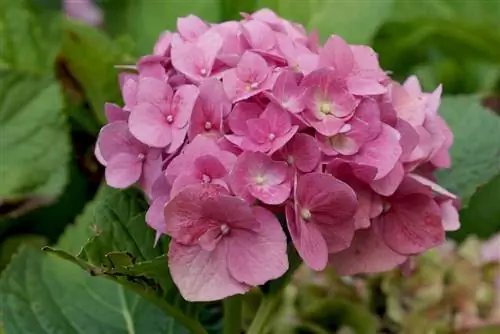
To ensure good development of the hydrangea, it should be fertilized every two weeks from March to August. A special hydrangea fertilizer is available in stores for this purpose, which should definitely be used as it already contains everything the plant needs and is therefore tailored to the special requirements.
Maintained blue flower color
Hydrangea flowers are usually naturally white or pink. The beautiful blue color, on the other hand, is made that way by retailers. If you buy a blue hydrangea from a gardening store and want to keep it, you have to do a lot. Because if the plants are not treated as follows, the next flowers will bloom pink again next year:
- the pH value must always be between 5 and 5.5
- Use potassium alum or ammonia alum for this
- is available in pharmacies
- is added with the irrigation water
- pink flowers turn blue this way
Tip:
The traditional opinion that hydrangeas need more iron to turn blue is therefore not true. Therefore, the tip of burying iron nails in the ground around the roots is unfortunately not recommended as it is useless.
Propagate
If you want more than one hydrangea, you can easily propagate the existing plant using cuttings. The procedure is as follows:
- best time in July
- cut a few new shoots
- should not be woody yet and have no buds
- one pair of leaves at the top and bottom
- remove the lower leaves
- Place the lower eyes in a pot with potting soil
- Keep soil well moist
- Cover the pot with foil, ventilate daily
- choose a shady, bright location
- first roots after three to four weeks, remove foil
Now the new plants can be transplanted into a desired container before the winter rest. Rhododendron or azalea soil from stores should also be used as a substrate here. However, the small hydrangeas receive their first fertilizer after the winter rest, when they are allowed to move to their new location.
Tip:
In the first winter, the small hydrangea plants created from the cuttings must definitely be placed indoors and protected. In addition to the cellar and garage, a location in a stairwell or unheated room in the apartment is also suitable for the small pots.
Repotting
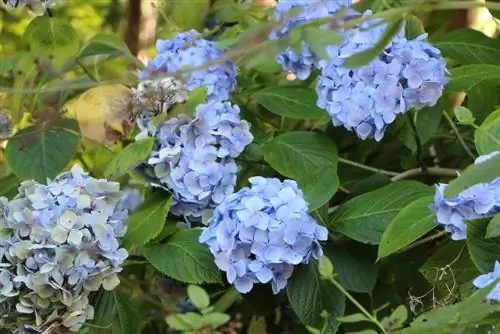
The hydrangea should be given a larger container every two to three years. This is prepared in the same way as described under “Plants”. Repotting should not be avoided under any circumstances, as in the worst case scenario the hydrangea could wither if its roots cannot spread any further. And the fresh substrate is also important for better growth.
Cutting
So that the plants in the pot don't get too big, they can be cut back regularly. And the spent flowers should also be removed regularly over the summer. This allows new flowers to form here. However, hobby gardeners leave the flowers on the plant over the winter to protect the new buds from frost and do not cut them off until the next spring. When cutting the hydrangea in the pot, you should pay attention to the following:
- cut directly under the withered flower
- new buds have already formed on the shoots all around
- carry out pruning in February
- only remove old and frozen branches
- Cut shoots that get in the way inside
- cut about a third of all old shoots at the base
- here the hydrangea is sprouting again
- serves for rejuvenation
- A radical cut is at the expense of the flowering in the year of cutting
Tip:
If shoots are cut back due to the size of the hydrangea, this can also affect flowering in the same year, because this cut removes the buds that were already formed the previous year. Therefore, hydrangeas should be cut as little as possible in height and width, but only thinned out from the inside.
Wintering
When overwintering the hydrangea in the pot, it is important to consider whether it is a winter-hardy variety or a non-hardy variety. For example, the farmer's hydrangeas, which are widespread here, are hardy; other varieties do not grow. Accordingly, various points must be taken into account when overwintering the potted plants. Nevertheless, the winter-hardy varieties in the pot should also receive a certain amount of protection:
Overwintering in pots of non-hardy varieties
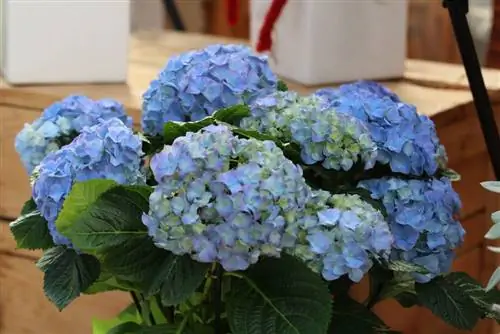
If a hydrangea that was grown in a bucket is a non-hardy variety, then the entire bucket must be moved to a frost-free place. This can be a basement room or a garage. If an unheated winter garden is available, this is ideal. The plant is treated in the winter quarters as follows:
- change before the first frost at the latest
- remove all old flowers
- stop fertilizing
- water only a little
- Above all waterlogging
- No more frosty nights to be expected
- Hydrangea slowly get used to brightness and warmth
- water more and start fertilizing
- possibly only go outside on warm days
- Spend the night inside again
A hydrangea in winter quarters is often attacked by spider mites. Therefore, the plant should not be left unattended for a long time but should be inspected frequently for pests so that quick action can be taken if necessary.
Tip:
Hydrangeas lose their leaves in winter, but the withered flowers do not fall off on their own, so help should be given here. It is important to ensure that newly formed buds are not damaged.
Overwintering in the pot of hardy varieties
If the variety of hydrangeas, such as the farmer's hydrangeas that are widespread in this latitude, is hardy, then the variety grown in the pot still needs to be protected a little. In the pot, the penetrating frost can damage the roots, as there is much less soil to protect them, as in a garden bed. Therefore, when overwintering the hardy varieties in the bucket, you should proceed as follows:
- Place the bucket in a protected corner
- on a piece of wood or Styrofoam
- cover with plant fleece or brushwood
- add leaves to the soil as mulch
- water only a little and on frost-free days
- do not fertilize
- leave dried flowers on the plant
- Start fertilizing slowly in spring
- water more depending on the temperatures
Tip:
When there are no more frosty days and nights, the bucket can slowly be unpacked again and taken to its summer location.
Care errors, diseases or pests
A big care mistake is watering. If the wrong water is used here, if it contains too much lime, this can damage the plant and it will show yellow leaves. A second mistake is to water the plant too little; the hydrangea needs a lot of water, especially on very hot days. It indicates a lack of water through drooping flower stems and leaves. If you don't react immediately, the bush can dry out. However, if water is applied immediately, the hydrangea will recover quickly. Other diseases or pests appear as follows:
- Mildew infestation when there is too much moisture from above
- remove all affected areas
- possibly use pesticides
- Plants growing indoors are attacked by spider mites
- especially widespread in the winter months
- Aphids feel good in spring
- fight both pests with insecticides
- Leaf spot disease is caused by limescale in the water
- Be careful of sunburn and drying of the leaves
- therefore no direct sunlight

